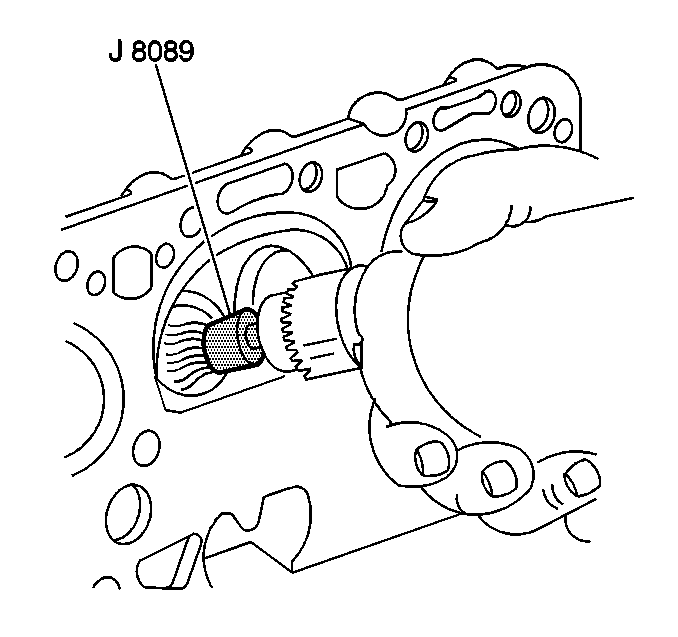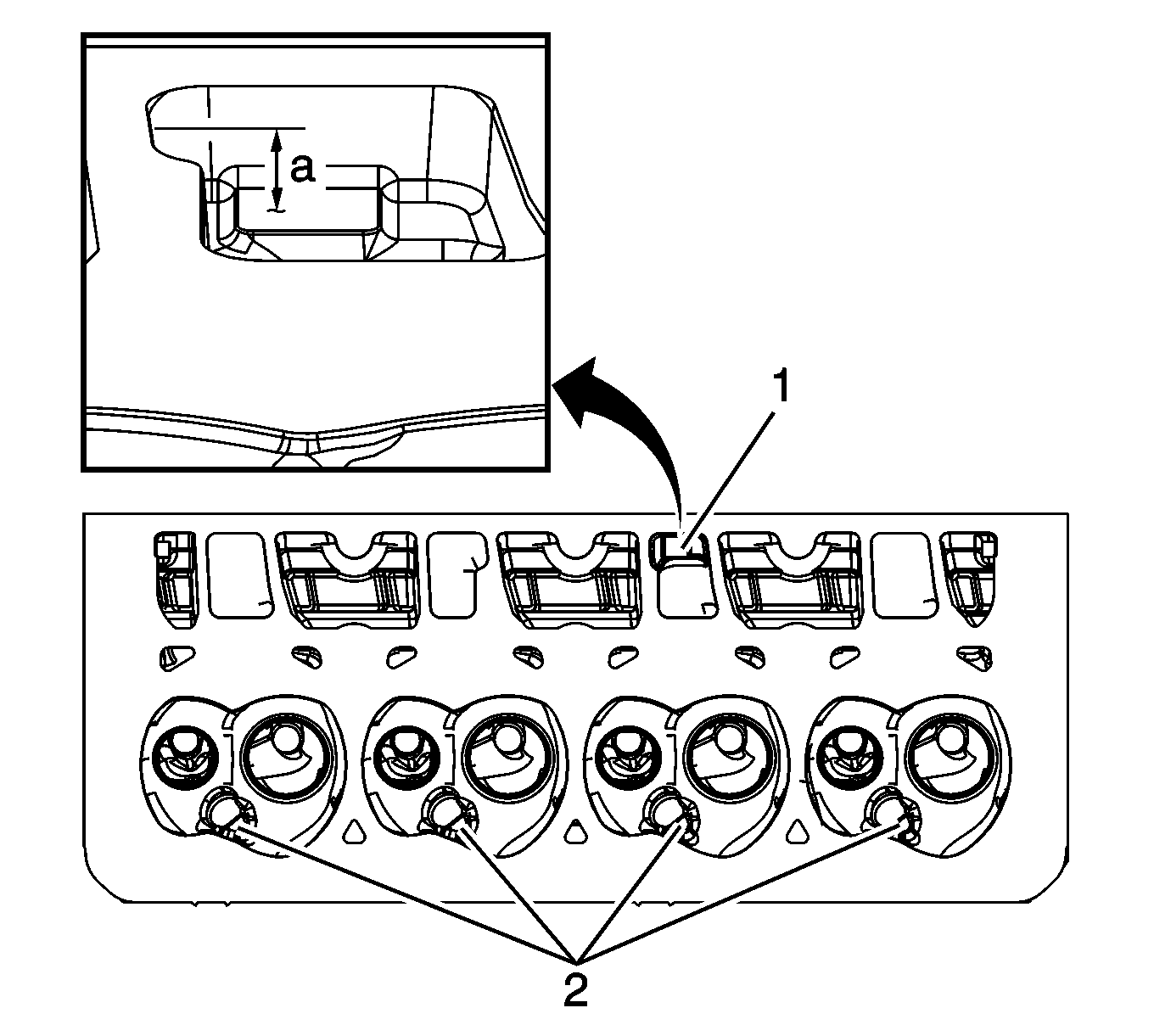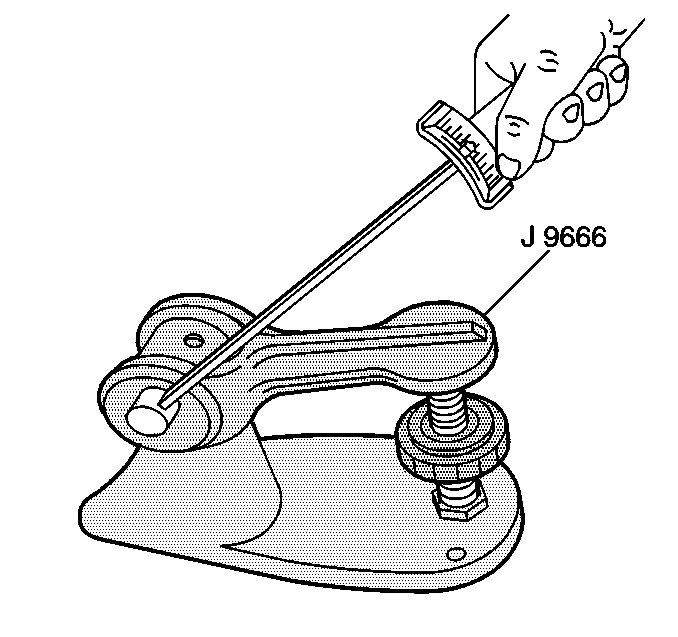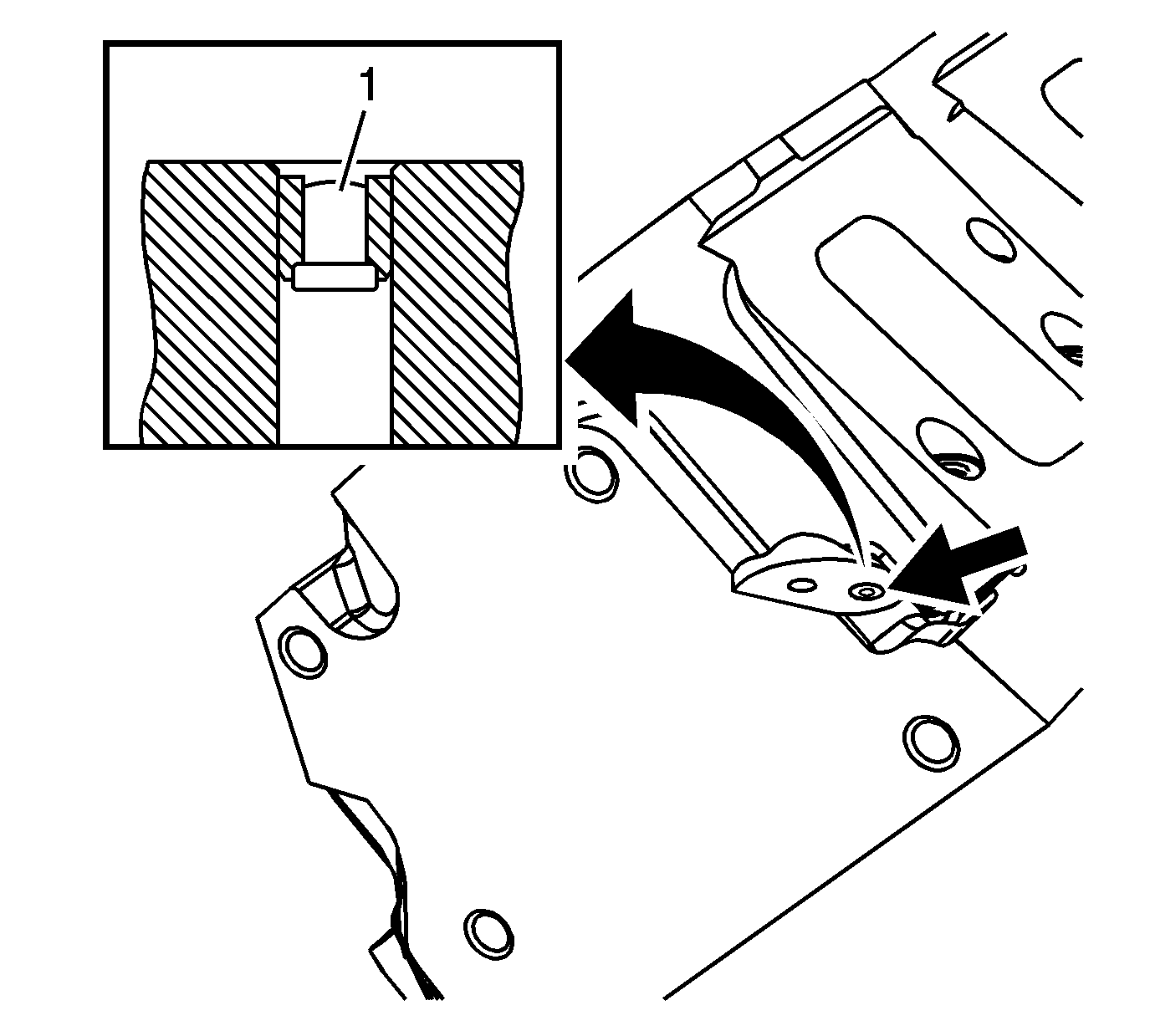Cylinder Head Cleaning and Inspection 6.2L LS9
Special Tools
| • | J 8089 Carbon Removal Brush
|
| • | J 9666 Valve Spring Tester
|
Warning: Refer to Safety Glasses Warning in the Preface section.

Note:
| • | When cleaning a cylinder head in a thermal type oven, do not exceed 204°C (400°F). |
| • | Be careful not to scuff the chamber. |
- Clean the following components:
| • | Use the
J 8089 Brush
in order to remove the carbon from the combustion chambers. |
| • | Valve stems and heads on a buffing wheel |
| | Remove all dirt, debris, or threadlocking material from the bolt holes. |
- Inspect the cylinder head for the following conditions:
| 2.1. | Cracks in the exhaust ports and combustion chambers |
| 2.2. | External cracks in the water chambers |
| 2.3. | Gasket surfaces for excessive scratches or gouging |
Refer to
Replacing Engine Gaskets.
| 2.4. | Bolt hole threads for debris or damaged threads |
Refer to
Thread Repair or
Thread Repair Specifications.

- Inspect the cylinder head for warpage. Refer to
Engine Mechanical Specifications.

- Cylinder heads that have excessive
warpage or a damaged sealing surface can be machined as required. Determine the cylinder head thickness as measured from the cast in place machining pads (1 and 2) to the head deck sealing surface. A cylinder head that measures less than 6.88-7.12 mm
(0.271-0.283 in) (a) cannot be machined and must be replaced.

- Use the
J 9666 Tester
in order to measure the valve spring tension.
Refer to
Engine Mechanical Specifications.

- Inspect for a leaking plug. Production applications use a rivet-type plug at the
top rear coolant passage of each cylinder head. If service of a leaking plug is required, it is necessary to remove the cylinder head from the engine to properly remove the plug. Refer to
Cylinder Head Disassemble
Cylinder Head Cleaning and Inspection 6.2L LS3
Special Tools
| • | J 8089 Carbon Removal Brush |
| • | J 9666 Valve Spring Tester |
Warning: Refer to Safety Glasses Warning in the Preface section.

Note:
| • | When cleaning a cylinder head in a thermal type oven, do not exceed 204°C (400°F). |
| • | Be careful not to scuff the chamber. |
- Clean the following components:
| • | Use the
J 8089 brush
in order to remove the carbon from the combustion chambers. |
| • | Valve stems and heads on a buffing wheel |
| | Remove all dirt, debris, or threadlocking material from the bolt holes. |
- Inspect the cylinder head for the following conditions:
| 2.1. | Cracks in the exhaust ports and combustion chambers |
| 2.2. | External cracks in the water chambers |
| 2.3. | Gasket surfaces for excessive scratches or gouging |
Refer to
Replacing Engine Gaskets.
| 2.4. | Bolt hole threads for debris or damaged threads |
Refer to
Thread Repair or
Thread Repair Specifications.

- Inspect the cylinder head for warpage. Refer to
Engine Mechanical Specifications.

- Use the
J 9666 tester
in order to measure the valve spring tension.
Refer to
Engine Mechanical Specifications.

- Inspect for a leaking plug. Second design applications use a rivet-type plug at
the top rear coolant passage of each cylinder head. If service of a leaking plug is required, it is necessary to remove the cylinder head from the engine to properly remove the plug. Refer to
Cylinder Head Disassemble
Cylinder Head Cleaning and Inspection 7.0L
Special Tools
| • | J 8089 Carbon Removal Brush |
| • | J 9666 Valve Spring Tester |
For equivalent regional tools, refer to
Special Tools
Warning: Refer to Safety Glasses Warning in the Preface section.

Caution: Do not clean titanium components with chlorinated solvents. Brake parts, and similar cleaning solvents, safety solvents, or refrigerant that contains chlorofluorocarbons (CFCs) should not
be used. Using chlorinated solvents to clean titanium components can result in component damage, leading to stress corrosion cracking that may be undetected with normal visual inspection. Acceptable materials for cleaning titanium components include non-chlorinated
solvents, alcohol, acetone, and methanol.
Note:
| • | When cleaning a cylinder head in a thermal type oven, do not exceed 204°C (400°F). |
| • | Be careful not to scuff the chamber. |
- Clean the following components:
| • | Use the
J 8089
J 8089 brush
in order to remove the carbon from the combustion chambers. |
| • | Remove all dirt, debris, or threadlocking material from the bolt holes. |
- Inspect the cylinder head for the following conditions:
| 2.1. | Cracks in the exhaust ports and combustion chambers |
| 2.2. | External cracks in the water chambers |
| 2.3. | Gasket surfaces for excessive scratches or gouging |
Refer to
Replacing Engine Gaskets.
| 2.4. | Bolt hole threads for debris or damaged threads |
Refer to
Thread Repair or
Thread Repair Specifications.

- Inspect the cylinder head for warpage. Refer to
Engine Mechanical Specifications.

- Use the
J 9666 tester
in order to measure the valve spring tension.
Refer to
Engine Mechanical Specifications.

- Inspect for a leaking plug. Second design applications use a rivet-type plug at
the top rear coolant passage of each cylinder head. If service of a leaking plug is required, it is necessary to remove the cylinder head from the engine to properly remove the plug. Refer to
Cylinder Head Disassemble













